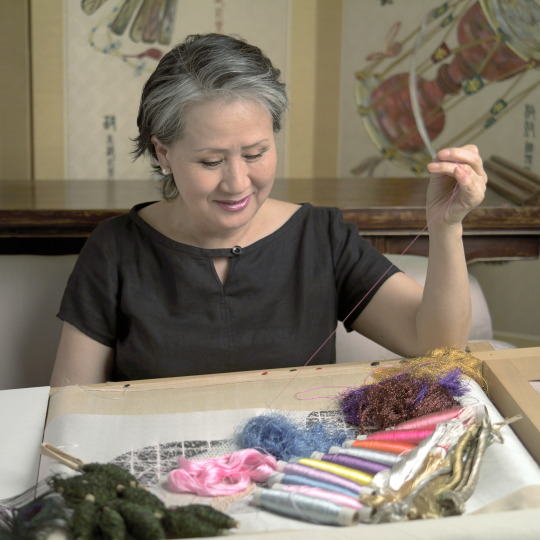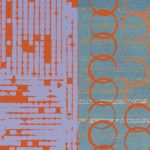Conversations | Young Yang Chung on Creating Artwork for a Unified Korea
Chung, a member of NYFA’s Leadership Council, created “Unification” for Korean President JungHee Park in 1967.
Korea has existed as two separate states since the 1950-53 Korean War. Talks of unification—and ultimately peace between the two states—have been intensifying since the Olympic Games that were recently held in PyeongChang.
The topic is a familiar one to NYFA Leadership Council Member Young Yang Chung, a textile artist and historian who is the Founder/Director of The Chung Young Yang Embroidery Museum Korea/Seol Won Foundation USA. In the late 1960s, she was commissioned to create an embroidered artwork representing a united Korea for Korean President JungHee Park.
The ten-paneled folding screen features the Rose of Sharon, the national flower of South Korea. Flowers are among the most widely-evoked motifs in traditional Korean embroidery, and over the centuries the Korean people have imbued various types of flowers with special meanings and cultural references. Configured in the shape of the Korean peninsula, the white flowers on the left symbolize South Korea and the red flowers on the right represent the North. The blossoming of the flowers expresses the hope for reunification as well as the strength and fortitude of Korea’s national spirit.

Each flower is embroidered with hand-twisted threads in three to four different thicknesses in order to create realistic visual effects. The flower petals are delicately shaded using long and short stitches, each rendered three-dimensionally with thread and cotton underpadding, a hallmark of traditional Korean embroidery. To create naturalistic textured bark, Chung roughly twisted and knotted threads more than twice as thick as those used for the petals and applied them in straight, irregular satin stitches.
Chung employed an innovative two-handed technique—the right one on the top of the stretched fabric and the left underneath the embroidery frame—to stitch the design onto a silk ground fabric using one-inch long needle and hand-twisted silk threads. The stitching technique was repeated 90 to 100 times per petal. Applying just one square inch of embroidery entails several hours of labor, and a screen this large required more than three years to complete.
It is assumed that the work is still in the collections room in the Blue House, which is the executive office and official residence of the South Korean head of state in Seoul.

“In making this, I thought of my experience going through the Korean War, when I was evacuated from Seoul to the remote countryside. I saw and experienced many hardships as the North Koreans invaded the countryside, harming intellectuals and landowners. I was in elementary school at the time, but this experience remained in my memory when the work was created in the 1960s,” said Chung. “Like all Koreans, I wish for a stable peace between the two sides. While allowing the reunion of families painfully separated by the long-term political division, peace also would allow young artists and creators to travel freely across the peninsula, sharing their experiences and perspectives, inspiring them to improve their own works, and perhaps open up new directions in Korean art,” she added.
– Interview conducted by Amy Aronoff, Senior Communications Officer
Images: Young Yang Chung, “Unification,” 1960s, wood, silk, and polyester, Photo Courtesy: The Chung Young Yang Embroidery Museum Korea and Young Yang Chung stitching with her own two hands, Photo Credit: John B. Taylor





